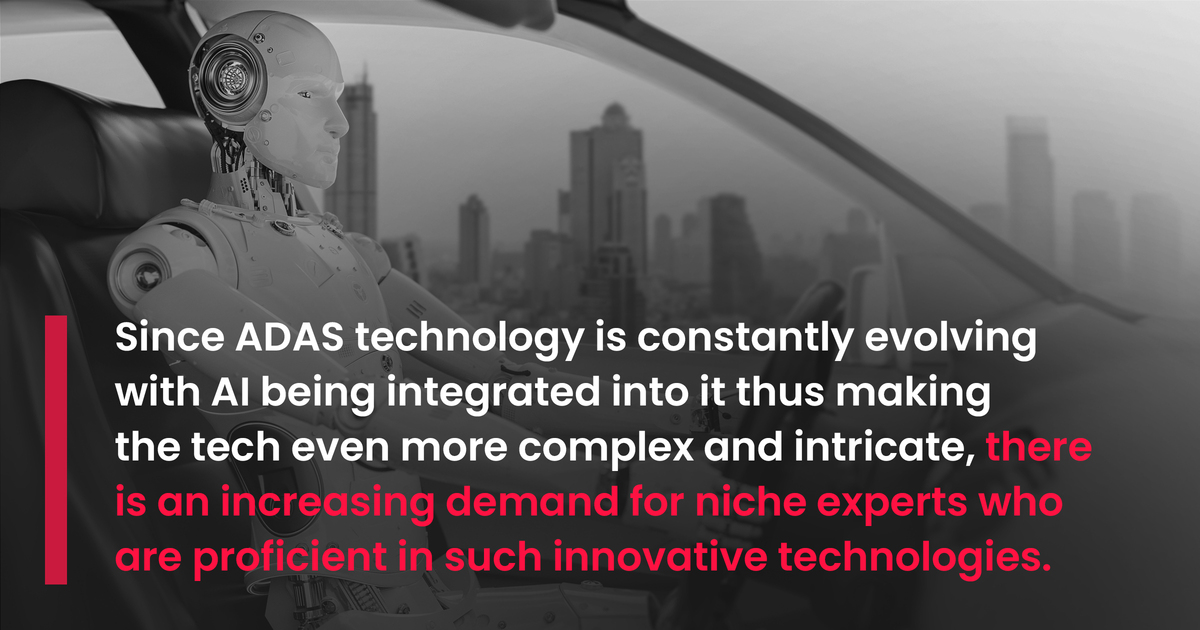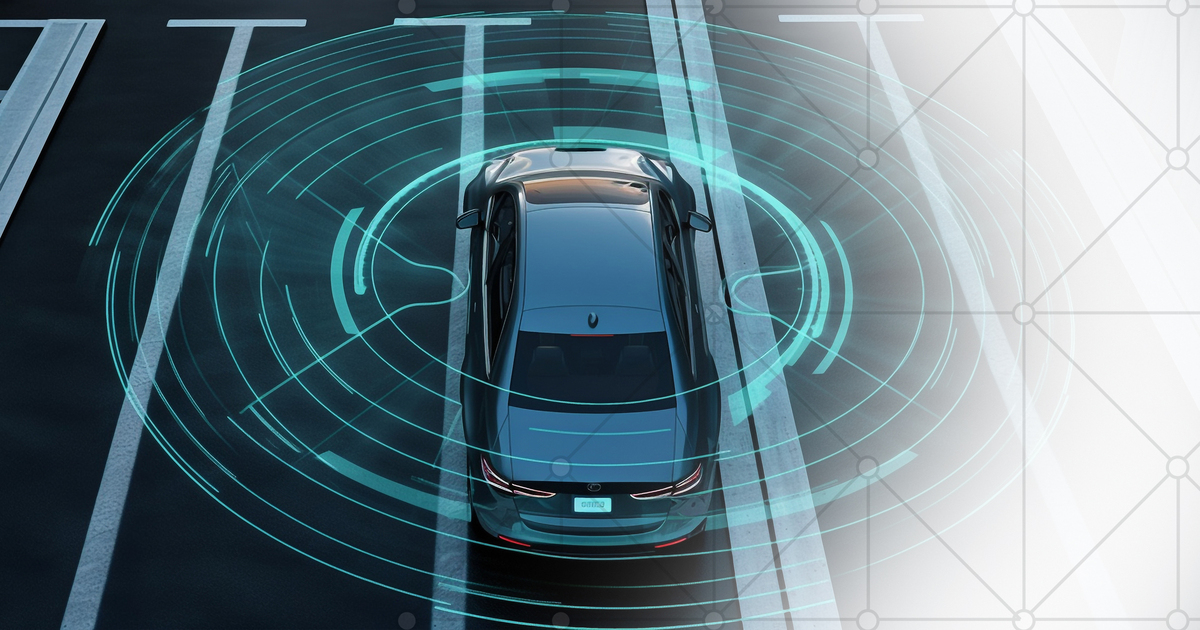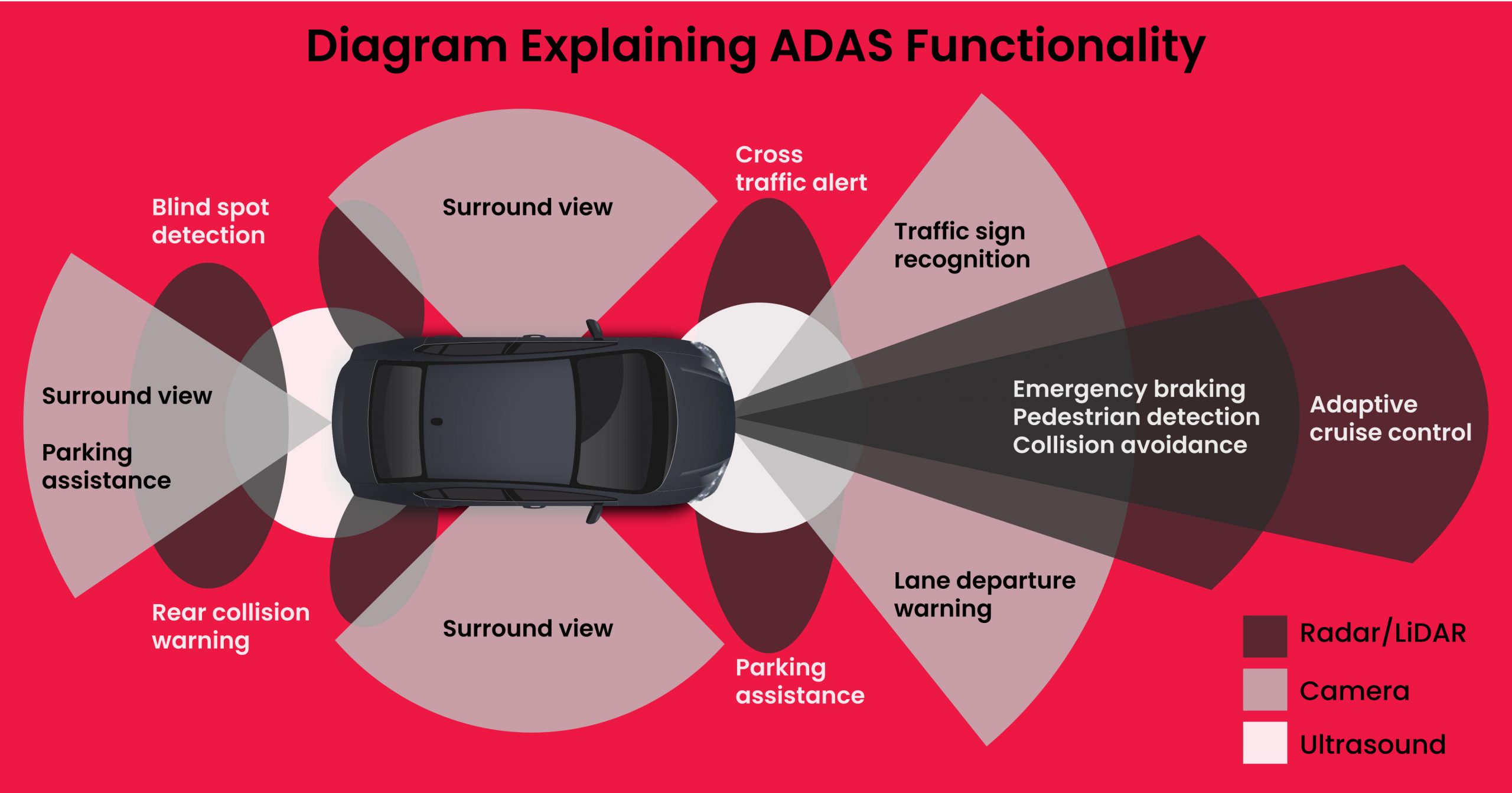The automotive sector is constantly on the lookout for innovative ways to improve driver and traffic safety. In order to minimize the number of casualties and fatalities among drivers and pedestrians as much as possible, car makers have devised Advanced Driver Assistance Systems, or ADAS in short.
Vehicles equipped with this technology allow the driver to be informed of what is happening around them, particularly in a car’s blind spots and in bad weather, as well as during nighttime darkness.
With the number of vehicles continually on the rise, in just under 10 years experts anticipate that the ADAS market size will register a spike of 300%, hitting a figure that exceeds $130 billion.
Let’s dive deeper and learn more about ADAS and what the future holds for it.
What is ADAS?
By using the term ADAS, experts seek to describe a number of technological components that vehicles are equipped with to reduce the number and seriousness of crashes involving motor vehicles, and to increase pedestrian and rider safety. A modern car can be equipped with ultrasonic, laser, infrared, radar, and light detection and ranging (LiDAR) sensors.
 ADAS Features
ADAS Features
A car can be equipped with the following important ADAS features:
- Pedestrian Detection System: identifies people on the street to avoid collision.
- Lane Departure Warning: alerts when a vehicle strays from its lane.
- Adaptive Cruise Control (ACC) assists in maintaining a speed limit and a safe following distance.
- Driver Drowsiness Detection: assists tired drivers in preventing accidents.
- Traffic Sign Recognition
- Automatic Emergency Braking (AEB)
- Blind Spot Detection
- Anti-lock Braking Systems
- Automatic Parking
- Night Vision
These technologies can provide crucial information regarding traffic, road closures and obstacles, traffic density, suggested routes to avoid traffic, etc. They can also be used to identify drivers’ tiredness and distraction, provide warning signals, and evaluate driving behavior. By constantly developing this technology, companies will improve the effectiveness and safety of self-driving cars.
According to some industry analysts, ADAS technologies could be revolutionary when used collectively. This is especially important for cargo transporters, whereby fleet owners can recognize driver habits that need to be corrected by using data from ADAS, and this will eventually help with driver retention.
Explaining ADAS System in Vehicles
ADAS Global Market
Because the car manufacturing industry is constantly growing, the global market for ADAS is expected to also grow, particularly in view of the increasing demand for electric vehicles (EVs) and with more driverless vehicles being produced.
According to estimates, the ADAS market was valued at US$40.4 billion in 2022 and is projected to increase at a compound annual growth rate (CAGR) of 13% over the next ten years, hitting US$133.7 billion. Asia Pacific is expected to account for the largest share of the ADAS market by 2030, with North America and Europe following closely behind.
Today, some of the biggest players on the ADAS market are Autoliv Inc. (one of the global leaders in automotive safety systems based in Sweden), Continental AG (German automotive giant), DENSO Corporation (worldwide producer of automotive components based in Japan), Robert Bosch GmbH (German engineering and tech giant), Panasonic Corporation (multi-national electronics company based in Japan), Renesas Electronics Corporation (Japanese semiconductor manufacturer), and Texas Instruments (American semiconductor manufacturer).
One of the innovations in the industry is the automated valet charging presented by Robert Bosch GmbH at CES 2024. Using this technology, EVs can drive autonomously to a free parking place that is equipped with a charging station featuring an automated valet parking system. The robot then autonomously charges the vehicle’s battery, after which the car automatically moves to a new parking area, making room for the next vehicle.
Tighter safety regulations around the world and a rising demand for safe and comfortable driving are the main factors driving ADAS industry trends.
The Biggest ADAS Markets in the World
Chinese ADAS Market
Today, China tops the chart of the largest car producers, which is no surprise given that the country has managed to achieve significant progress in developing ADAS for its vehicles. The nation’s major producers of ADAS systems include Xpeng, Baidu Apollo, Pony.ai, and DiDi.
Moreover, major investments in ADAS technology R&D, particularly autonomous driving, have been made by a number of Chinese companies, such as Baidu and Alibaba. Several leading ADAS companies from outside the country have also established businesses in China to serve local original equipment manufacturers like BYD and Geely.
Japanese ADAS Market
Japan’s automobile industry is among the key worldwide marketplaces with the quickest rate of growth. For many years, car manufacturers from Japan, including Honda, Toyota, and Nissan, have been carrying out studies of innovative technologies for vehicles, including ADAS, equipping their cars with ACC, AEB, and more. Furthermore, through several funding programs, the government encourages the progress and widespread application of ADAS technology.
South Korean ADAS Market
South Korea stated in 2021 that, over the next four years, it would construct and test self-driving vehicles on public highways. By 2025, it hopes to have Level 5 vehicles that can drive autonomously without the need for human assistance. It is therefore obvious that the country is heavily investing in the latest technology that would make driverless vehicles much safer.
The Role of Expert Networks in the ADAS Market
Businesses working on ADAS technologies require specialists who are able to resolve complex issues, be they technical, marketing, or legal. Since expert networks provide specialized advice and knowledge to their clients, they play a crucial role in numerous industries, including the ADAS market.
- Expert networks can connect companies in the field with professionals in automotive engineering, software development, artificial intelligence, sensor technology, and others. These experts can then help organizations gain insights, solve complex problems, or validate their approaches.
- ADAS technologies, just like any other technology, must comply with certain rules and regulations. That said, expert networks can help companies navigate various regulatory landscapes, guaranteeing that their products comply with all relevant laws and guidelines.
 Seasoned specialists, recruited by expert networks like RightAngle Global, have extensive backgrounds in the automobile ADAS sector. To provide unmatched insights, the company has worked with top specialists, carried out in-depth market research, and carefully selected the most accurate insights.
Seasoned specialists, recruited by expert networks like RightAngle Global, have extensive backgrounds in the automobile ADAS sector. To provide unmatched insights, the company has worked with top specialists, carried out in-depth market research, and carefully selected the most accurate insights.
Final word:
The ADAS sector is constantly developing, both in terms of hardware and software. Advances are being made in processing power, memory, and communication speed among various components such as radar and cameras. These systems will continue to evolve, making transport more secure, and keeping drivers and transportation companies more informed with Expert Networks having a major impact on the progress.
Suggested reading:
Generative AI 2024: The Year Innovation Will Hit a New Phase
Data Science Evolves Rapidly. What Are the Five Major Trends for 2024?
How Expert Networks can help companies to keep up with industry trends
Share to


